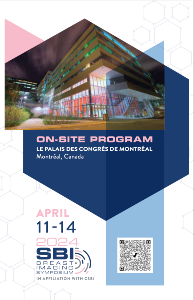My Patient Has Dense Breast Tissue… Now What? Empowering Radiologists to Guide Patient-specific Recommendations for Supplemental Screening
ePosters

Carrie Rochman, MD
Associate Professor, Breast Imaging
University of Virginia
Presenter(s)
Background: Dense breast tissue occurs normally in approximately 40-50% of women undergoing mammographic screening. Dense breast tissue results in decreased sensitivity of conventional mammography and decreased early detection and diagnosis. In addition, dense breast tissue contributes to increased breast cancer risk. Several methods for supplemental screening for women with dense breast tissue have been widely studied. However, referring providers remain confused about which test is appropriate for individual patients.
Learning Objectives: Compare and contrast supplemental screening options for women with dense breast tissue including whole breast ultrasound (WBUS), contrast enhanced mammography (CEM), abbreviated magnetic resonance imaging (abMRI), and breast specific gamma imaging (BSGI). Review unique patient scenarios that may interfere with imaging performance of each modality. Encourage radiologists to include patient-specific recommendations in screening mammography reports.
Abstract Content/Results: This educational presentation will review current literature on supplemental screening options for women with dense breast tissue. Pros and cons of WBUS, CEM, abMRI, and BSGI will be discussed with emphasis on cancer detection rates, false positive rates, radiation dose, and contrast considerations. Ten clinical cases that illustrate patient-specific scenarios such as chest wall deformity, breast thickness, marked background parenchymal enhancement, contrast allergies, and renal function, that may impact imaging performance of each modality differently, will be presented. Radiologists will be encouraged to guide recommendations for supplemental screening based on these factors.
Conclusion: Knowledge of key differences in supplemental screening modalities and patient-specific considerations can empower radiologists to guide patient-specific supplemental screening recommendations for women with dense breast tissue.
Learning Objectives: Compare and contrast supplemental screening options for women with dense breast tissue including whole breast ultrasound (WBUS), contrast enhanced mammography (CEM), abbreviated magnetic resonance imaging (abMRI), and breast specific gamma imaging (BSGI). Review unique patient scenarios that may interfere with imaging performance of each modality. Encourage radiologists to include patient-specific recommendations in screening mammography reports.
Abstract Content/Results: This educational presentation will review current literature on supplemental screening options for women with dense breast tissue. Pros and cons of WBUS, CEM, abMRI, and BSGI will be discussed with emphasis on cancer detection rates, false positive rates, radiation dose, and contrast considerations. Ten clinical cases that illustrate patient-specific scenarios such as chest wall deformity, breast thickness, marked background parenchymal enhancement, contrast allergies, and renal function, that may impact imaging performance of each modality differently, will be presented. Radiologists will be encouraged to guide recommendations for supplemental screening based on these factors.
Conclusion: Knowledge of key differences in supplemental screening modalities and patient-specific considerations can empower radiologists to guide patient-specific supplemental screening recommendations for women with dense breast tissue.

